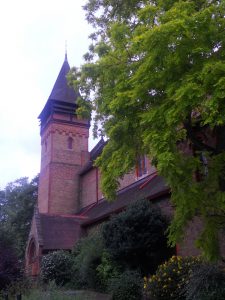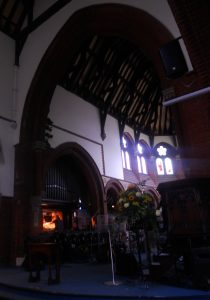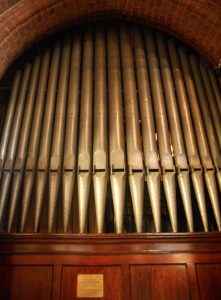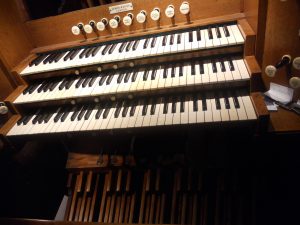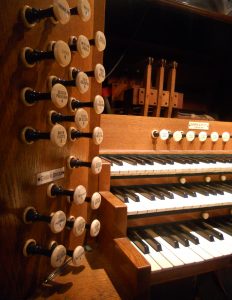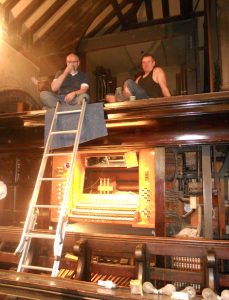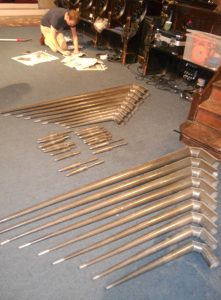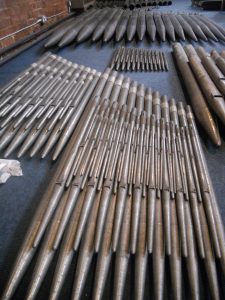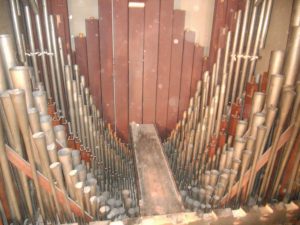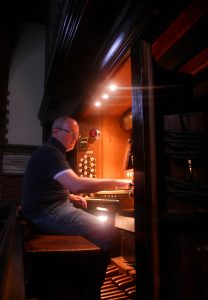Archive for December 17th, 2018
The organ in question was an enormous pipe organ built by T.C. Lewis and Co of London in about 1875. The transplant was a removal from the church of St Mark in Battersea and a putative installation into the Church of the Most Precious Blood in Southwark.
I lived near Battersea so when friends said that they were taking an organ out of one sanctuary and placing it into another, I was on the team. I was not expecting such a monster.
The external view of the organ was impressive enough – three manual keyboards and one bank of pedals. The fascia bristled with 29 stops and 12 couplers. An impressive bank of 33 big pipes faced out over the organist’s head and a further arrangement of 19 beauties faced the congregation. I was informed that the latter bank was composed of spotted metal, older and more prized than the plain, grey metal.
As with an iceberg, most of the organ was hidden. The 29 stops translates to an entirely different set of pipes per stop – one for each note – a total of well over 1500 pipes. All of them were connected to the bellows system by an intricate and delicate feat of plumbing.
As we began moving pipes out and laying them out in meticulously labelled fashion, a sizeable space began to open up. It turned out that the space formerly occupied by the organ could accommodate a two-storey house of reasonable size. Another reason for the church finally overcoming sentiment and deciding to jettison such a fine organ. They planned to put a suite of offices in the newly available space. This was in addition to the main reason – the pipe organ kept going wrong and was too difficult and expensive to keep repairing.
The pipes had been arranged with careful and economical use of space. Spread on the church floor, they soon filled the available space and needed to be stacked in a van, ready for transport to their new body. Some of the pipes had a length of 16 feet and some were smaller than a child’s kazoo.
The removal of the pipes took two days, then there was the transfer of the bellows and plumbing together with the keyboards and pedals. The intention is to reassemble the instrument in all its booming glory in the Church of the Most Precious Blood, in the Borough area of London. Details of the organ are on the site of the National Pipe Organ Register. The difficulty and expense of keeping a pipe organ in musical operation means that donations are always gratefully received.
I think everyone would like to see and hear this magnificent Heath Robinson (or Rube Goldberg) machine inspiring awe once again in a working context.

